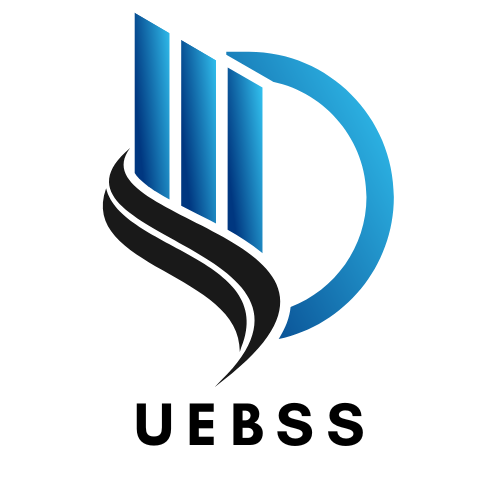Leveraging Data Integration to Assess and Improve Teaching Effectiveness in Higher Education
Abstract
The pursuit of teaching effectiveness is central to the mission of higher education institutions. Yet, assessing and improving teaching effectiveness remains a complex task, often hampered by fragmented data and limited insights into the multifaceted factors influencing learning outcomes. This paper presents a data integration framework designed to consolidate disparate data sources across higher education institutions, enabling comprehensive assessment and targeted improvements in teaching effectiveness. By integrating data from student evaluations, learning management systems (LMS), attendance records, academic performance, and classroom engagement metrics, the framework provides a holistic view of teaching practices and their impact on student success. With real-time access to these integrated data sources, educators and administrators can make data-informed decisions that enhance instructional strategies, improve student engagement, and promote overall academic achievement.
The proposed framework employs advanced data integration techniques to combine structured and unstructured data from multiple sources, creating a unified repository of teaching-related data. Data integration tools, such as Extract, Transform, Load (ETL) processes and cloud-based data warehouses, serve as the backbone of the system, facilitating the seamless consolidation of data from LMS platforms (e.g., Canvas, Blackboard), student feedback forms, and institutional databases. Additionally, the framework incorporates machine learning algorithms to analyze patterns in teaching effectiveness, identifying correlations between instructional practices and student outcomes. For instance, the model can detect teaching behaviors associated with higher student performance, providing valuable insights for faculty professional development and pedagogical enhancement.
The real power of this data integration framework lies in its ability to perform longitudinal analyses of teaching effectiveness, tracking trends over time to capture both short-term outcomes and long-term instructional impacts. By integrating and analyzing data over multiple semesters, the system offers insights into the effectiveness of teaching interventions, curriculum adjustments, and pedagogical changes. Through advanced analytics and predictive modeling, the framework can identify which instructional strategies are likely to yield the best results in varying classroom environments, facilitating personalized teaching improvement plans for individual instructors. In addition, the system includes dashboards and visual analytics tools that display key performance indicators (KPIs) related to teaching effectiveness, such as student satisfaction scores, course completion rates, and average grades, making data accessible to educators and administrators.
To validate the effectiveness of this integrated framework, a pilot study was conducted at a large public university, encompassing data from over 200 courses across various departments. The study revealed significant improvements in the ability to assess teaching practices objectively. For instance, the analysis highlighted specific pedagogical approaches, such as increased use of active learning techniques, that were consistently linked to higher student engagement and improved academic performance. By providing instructors with this insight, the framework empowered them to adjust their teaching methods proactively. Furthermore, real-time feedback on student engagement and performance helped faculty identify struggling students early in the term, allowing them to implement targeted interventions and improve overall course outcomes.
A major challenge in implementing this data integration framework was addressing data privacy and security, particularly given the sensitive nature of student and faculty data. To mitigate these risks, the framework employs strict security protocols, including encryption, access control, and compliance with data privacy regulations like FERPA (Family Educational Rights and Privacy Act). Data anonymization techniques are applied to ensure that individual students’ identities remain protected while still providing valuable insights into general trends in teaching effectiveness. Additionally, the framework incorporates data validation and cleaning processes to maintain data quality, ensuring that the analytics are based on accurate and consistent information from each data source.
The framework also incorporates student feedback and engagement analytics as crucial components of assessing teaching effectiveness. Integrating student evaluations and feedback with LMS interaction data provides a more nuanced understanding of how students perceive different instructional methods and materials. For example, the system can analyze patterns in feedback related to course organization, clarity of instruction, and responsiveness, revealing the aspects of teaching that resonate most with students. These insights allow faculty to refine their teaching methods, prioritize improvements based on student needs, and foster a more student-centered learning environment.
In conclusion, this data integration framework offers a transformative approach for assessing and improving teaching effectiveness in higher education. By leveraging integrated data and advanced analytics, the system provides comprehensive, evidence-based insights that empower educators and administrators to make informed decisions about instructional strategies. The framework’s ability to consolidate data from diverse sources and deliver actionable insights promotes a culture of continuous improvement, helping institutions advance educational quality and student success. As higher education increasingly embraces data-driven approaches, this framework represents a significant step toward optimizing teaching effectiveness through integrated, real-time insights. Future research will focus on expanding the framework’s predictive capabilities, exploring the integration of additional data sources such as peer observations and professional development records, and assessing the impact of AI-driven recommendations on teaching outcomes across diverse educational contexts.





